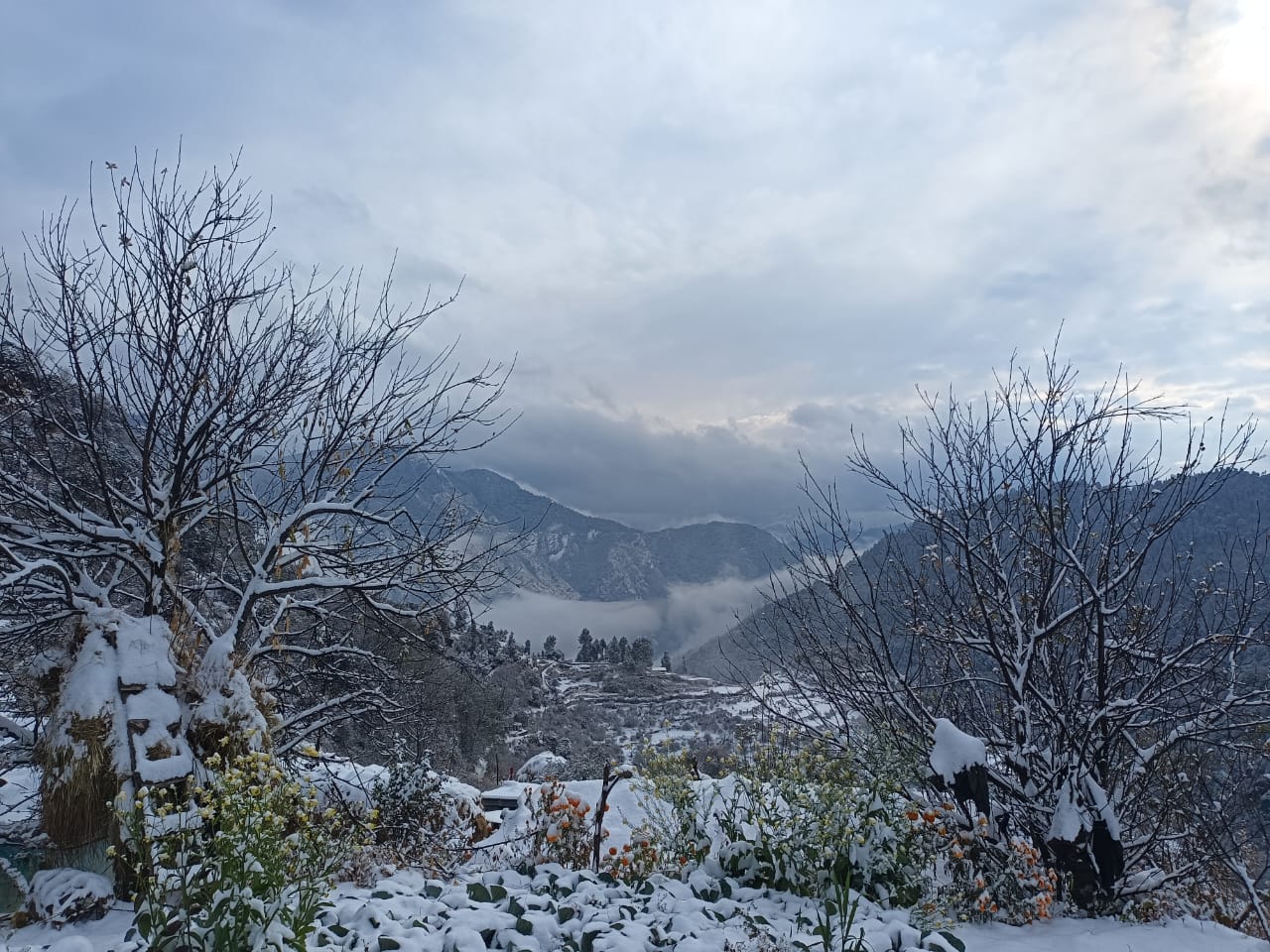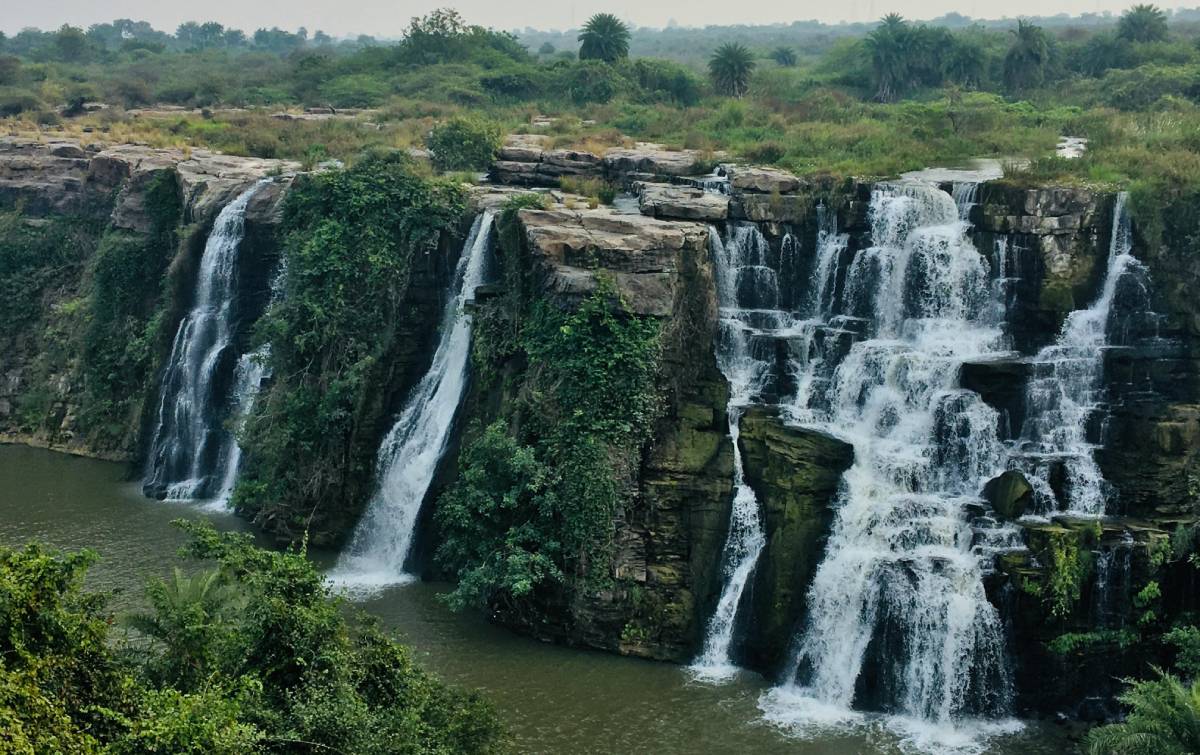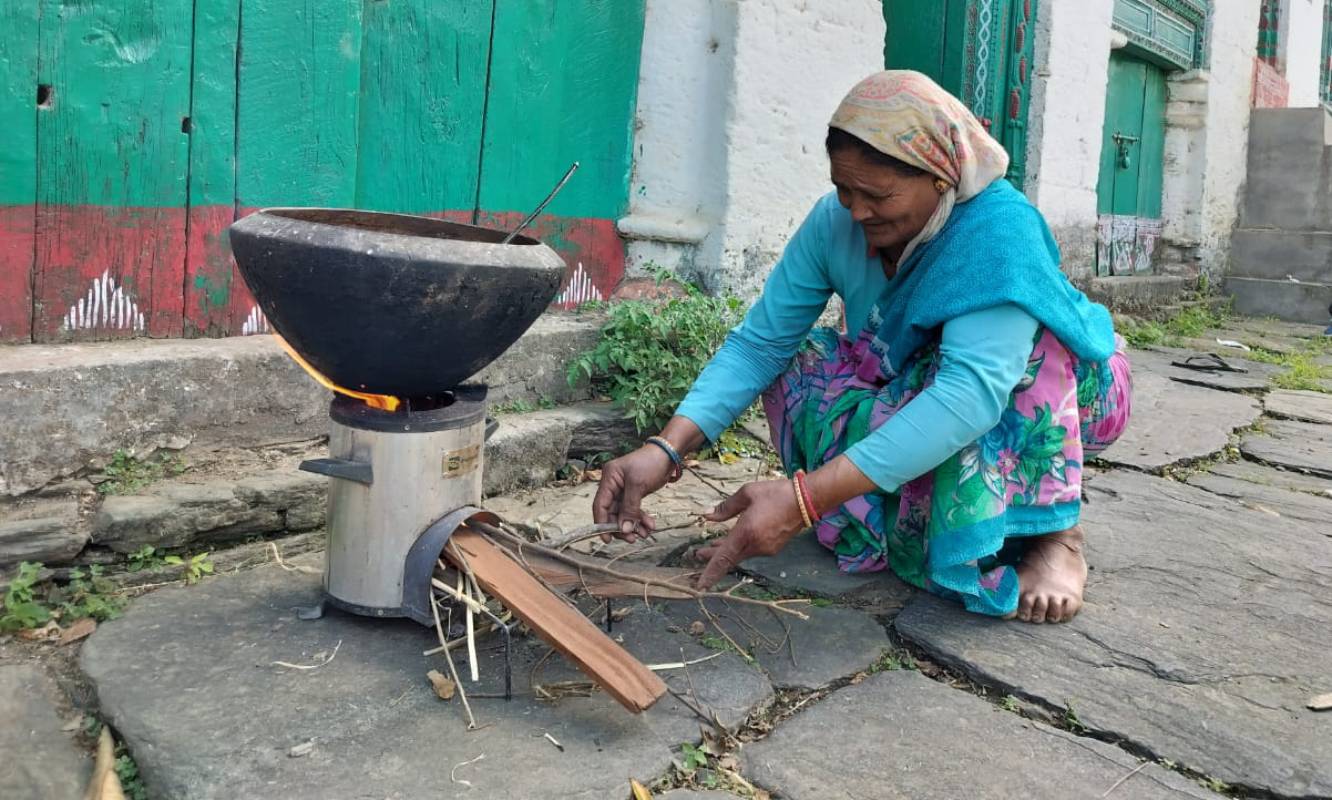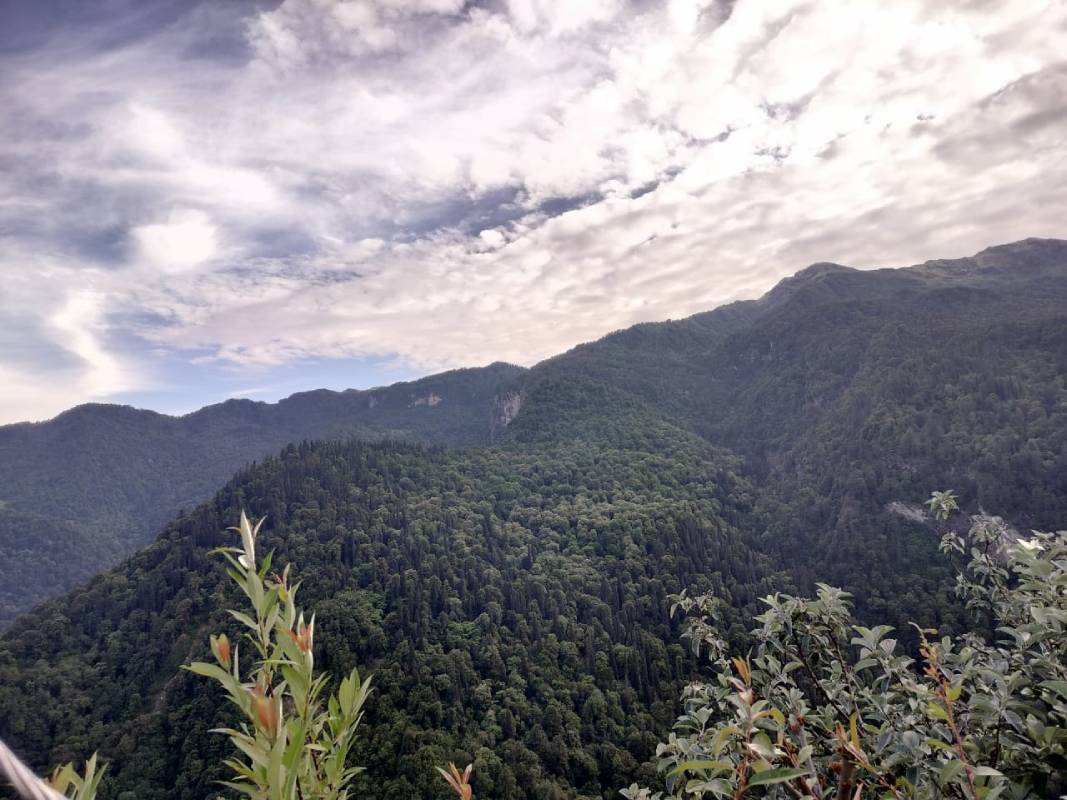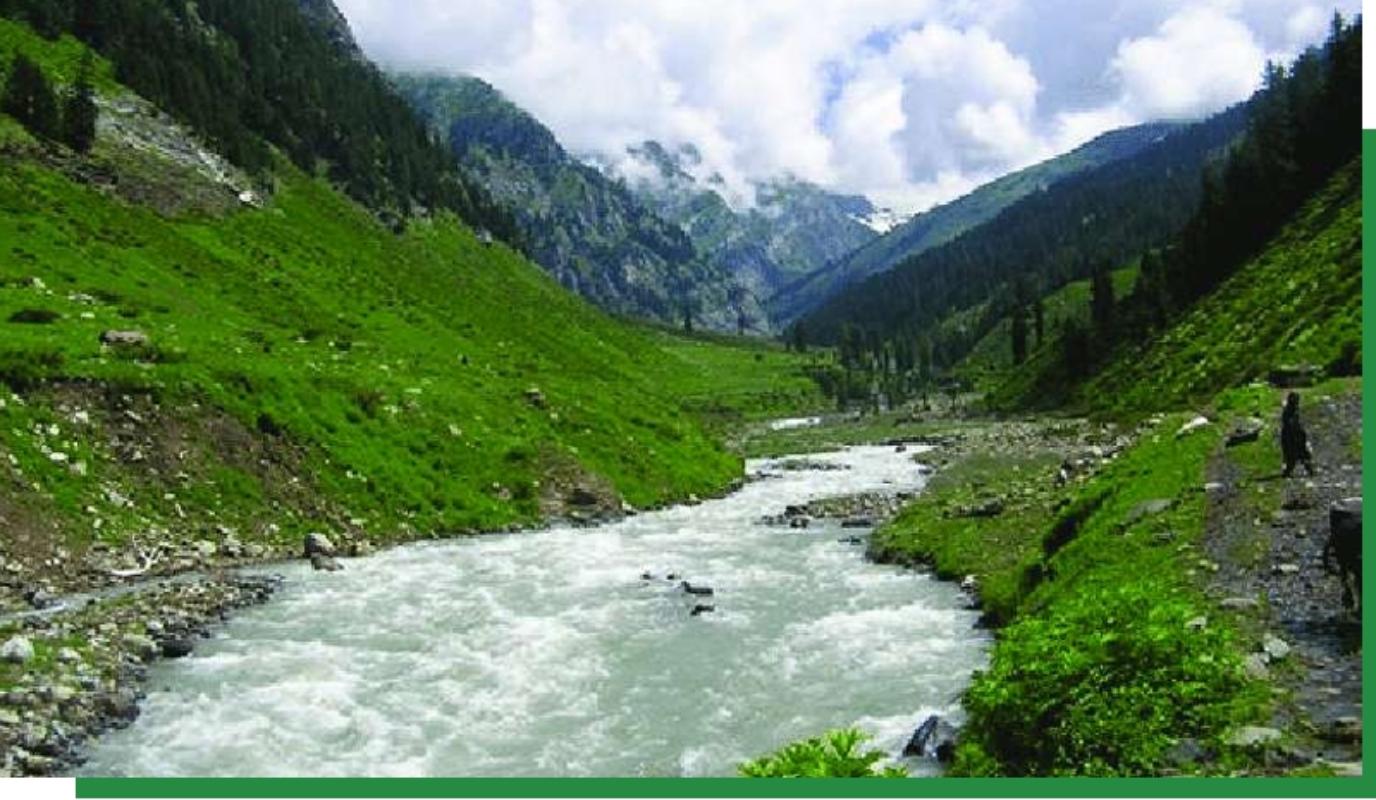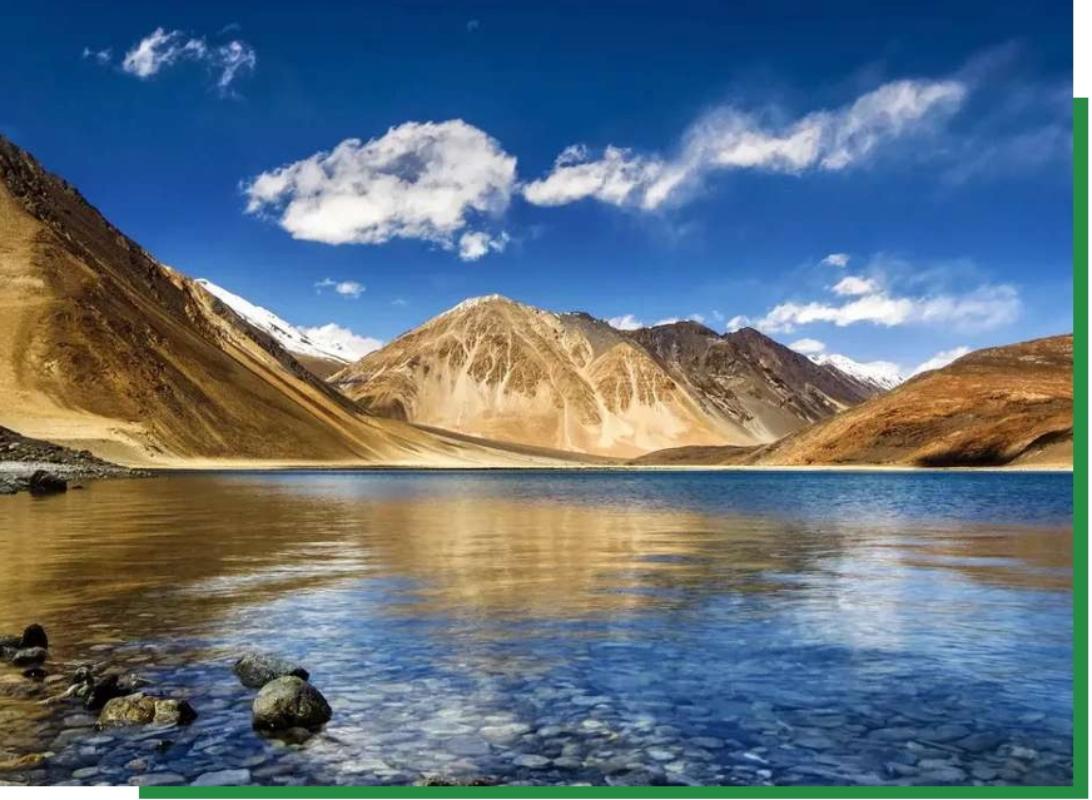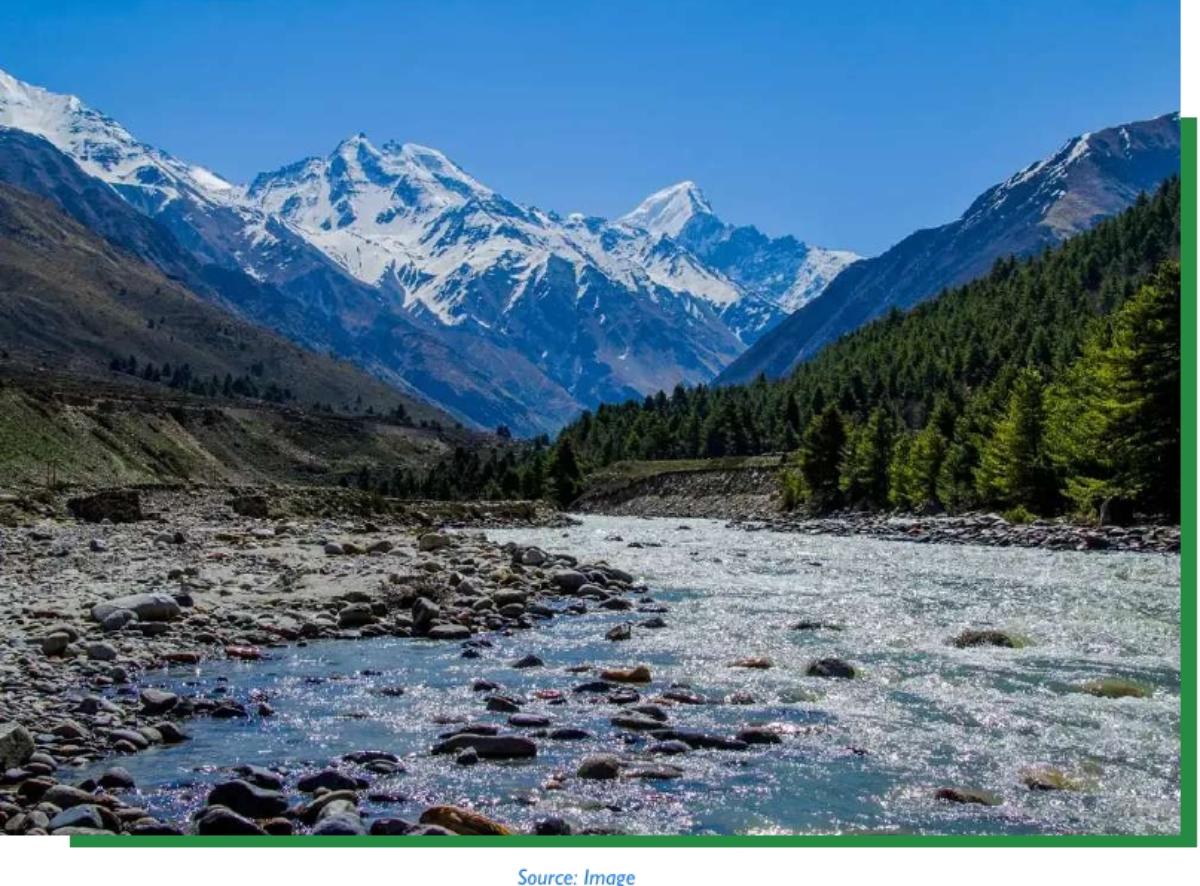The Rajiv Gandhi Institute for Contemporary Studies (RGICS) organized a webinar on September 9, 2024 to discuss current opportunities and challenges of Himalayan Ecology, Culture and Livelihoods. Eminent environmentalist and social activist Dr. Ravi Chopra moderated a panel discussion and delivered a brief lecture. Mr. Ramesh Negi, former chief secretary of Arunachal Pradesh and current President of the Integrated Mountain Initiative (IMI), Manshi Asher, environment justice activist and founder of the Himalayan Collective, Jyotsana Sitling, former PCCF of Uttarakhand, participated as panel discussants in this webinar. A gist of deliberation of all speakers is presented in this article.
Intersections of Ecology, Economy and Culture in Arunachal Pradesh
Mr. Ramesh Negi, former Chief Secretary of Arunachal Pradesh in his address helped to connect dots between cultural values, the geography, biodiversity, traditional political system and subsistence of the Arunachal Pradesh. He further linked that to the wellbeing of children of the state. In his address he also touched upon emerging threats to nature in the state.
The entire eastern Indian Himalayan Region is socially and ecologically highly diverse. Arunachal Pradesh alone has 27 different tribes. This diversity in the region is unified by two meta value systems – no compromises on injustice and sanctity of nature. These values not help them to unite in diversity but also sustain their livelihoods. Their agriculture, livestock and horticulture is completely nature based where no external inputs such as pesticides and chemical fertilizers are promoted. Biomass produced by hills and forests in the state automatically feeds their agriculture and horticulture. Arunachal Pradesh is known for organic production because of their traditions, values and cultural practices.
Connecting livelihoods and associated cultural values/practices of people with development of children, Mr. Negi emphasised that children in the state are not protein deficient as we observe in other parts of the country. He elaborates it by saying that the source of protein for children in the state is their staple food, food collected from forests, meat sourced from forest and fish. Mr. Negi acknowledged the contribution of their traditional political system for the strong foundation of nature based life and livelihoods. These traditional political systems are very strong where decisions are taken at community level and to a very large extent these decisions are integrated in the formal political and governance system of the state.
Mr. Negi in his concluding remarks also touched upon few threats and challenges. He argued that over emphasis on building of large dams in the state are adversely affecting water streams and aquatic life including fish which is one major source of protein for people. He also raised the issue of access to water and shortage of water in the state. While the state receives a lot of rain, yet the entire state faces shortage of water from December to February every year.
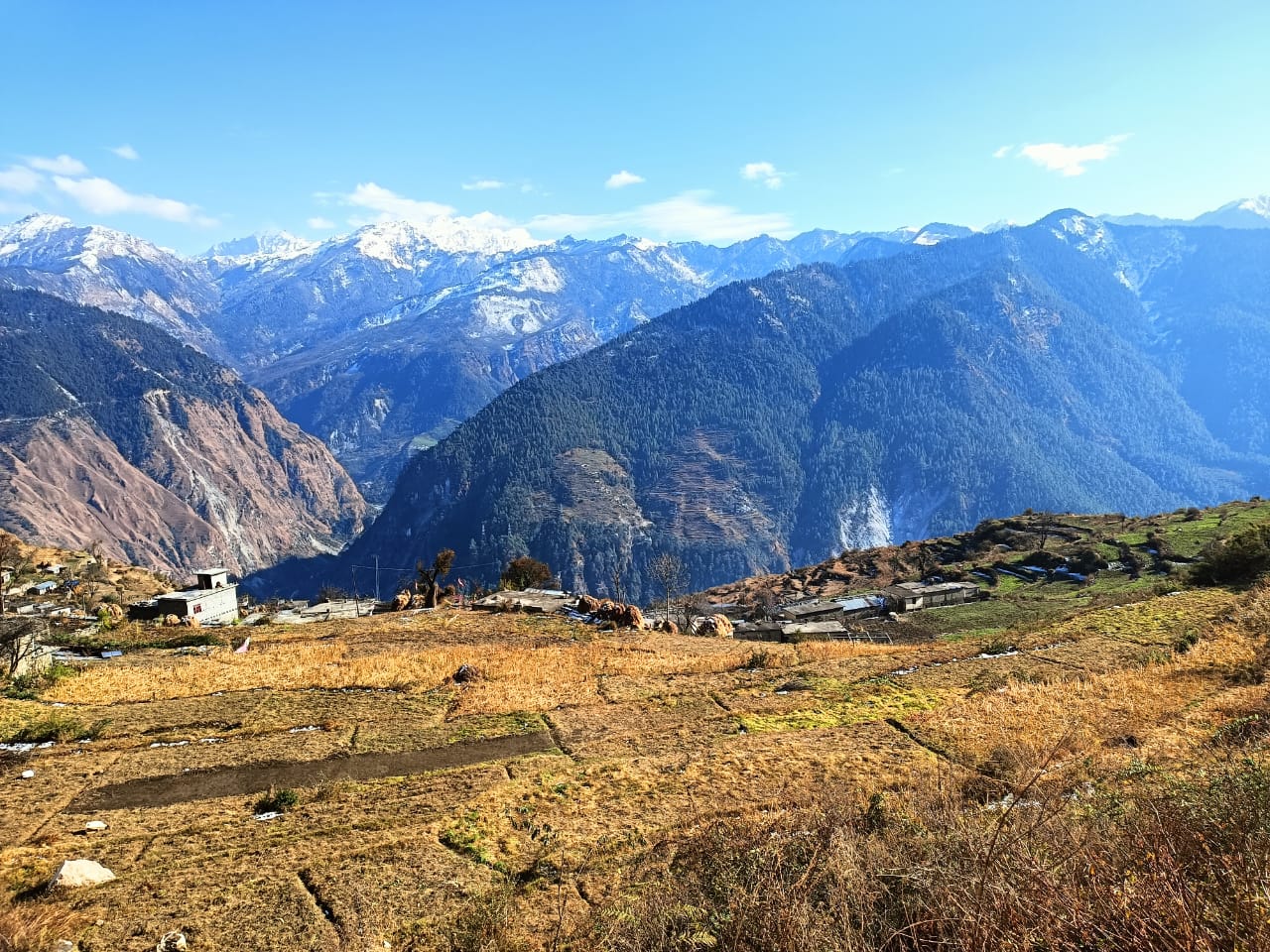
The Rise and Fall of Himachal Model of Development
Manshi Asher, a senior environmental justice activist in Himachal Pradesh in her address started with the Himachal model of development which was celebrated till late nineties at least in the Indian Himalayan Region. She further explained that this model systematically deteriorated and finally culminated in the form of a cycle of disasters today.
The development model of Himachal Pradesh according to Manshi Asher was based on following four strong pillars.
- Land reforms were very effective in Himachal Pradesh after independence. These reforms included land distribution and protection of agricultural land.
- People’s access to public welfare schemes and good rural connectivity.
- Promotion of horticulture and cash crops to enhance income of rural farmers.
- More than 50% of salaried jobs in the organized sector were in government sectors in Himachal Pradesh, which was employing a large number of people.
These developmental pillars in Himachal Pradesh were having no internal and external conflicts till late nineties. Furthermore the federal relation of the state with the central government was also cordial as compared to many other Himalayan states at that time.
This Himachal model of development in the Himalayan region started changing in the early 2000s. This change was triggered by bringing change in land use patterns in the state and promotion of hydro power projects. Such changes led to deforestation, drying of water streams, acquisition of agricultural land for big infrastructure projects and restriction on use of common property resources. These outcomes of the land use change in the state have adversely affected livelihoods such as agriculture, agro-pastoralism, horticulture, traditional trade, wool, handicrafts and weaving. Manshi argued that these developmental changes in the state broke various livelihood linkages which were connected with forest, water, land and mountains. It also created unrest and discontent among people.
In her concluding remark she linked all these historical changes in vision of development in the state to increasing incidents of disasters. She observed that Himachal Pradesh is now trapped in a cycle of disasters. However, the solutions offered to disaster mitigation are more techno-managerial which is myopic in its approach. She suggested seeing these disasters in a more holistic way by including society, culture, livelihood and ecology in an integrated manner.
A Green Economy through the Unique Biodiversity of Uttarakhand
Ms. Jyotsana Sitling is a retired IFS officer who served in Uttarakhand during most of his career. In her address she explained the basics of green economy for mountain states more particularly for Uttarakhand and suggested action points to promote the green economy in the state.
Ms, Sitling observed that nowhere in the world the conservation goals were effectively achieved through social projects. However, she stressed that more coordinated efforts can promote a green economy that will generate income and also conserve biodiversity. Currently there are 24 central ministries and 29 departments are working on issues related to biodiversity and cumulatively they spend nearly Rs. 20,000 crore per year. However, according to her we need at least Rs. 90,000 crore per year to conserve our biodiversity. Nearly 86% of the total investment on biodiversity is covered by government and private investment is just about 14%.
In order to achieve biodiversity goals and sustain livelihoods this investment has to go up. Therefore, the investment has to be diversified to reduce burden on taxpayers. The idea of a green economy will pool financial resources from various sources which will achieve the dual objective of biodiversity conservation and livelihood promotion.
Explaining the case of Uttarakhand, Ms. Sitling stated that the government of Uttarakhand in its vision document has recognized MSME, IT and Small Hydropower Projects as enablers of growth. Moreover, agriculture, horticulture and eco-tourism are defined as growth drivers. She further argued that these stated growth divers along with green construction are sectors important for the promotion of the green economy in the state. She also identified renewable energy, water conservation (harnessing and harvesting) and recycling of solid and liquid waste as enablers of green growth. The cross cutting sectors for the green economy are information technology, institutional infrastructure, knowledge infrastructure, capital market, banks and financial institutions. According to Ms. Sitling these cross cutting sectors will help to integrate conservation mindset in mainstream development agenda.
Green economy in the mountain states of the Himalayan region is possible, but in order to bring this, the state needs to be prepared for suitable investment. Ms. Sitling in her concluding remarks argued that we must identify niche markets for its agriculture and horticulture products, pool resources and develop capacity at the level of entrepreneurs, clients and inter-mediatory. Civil society organizations can be used to organize collective bargaining power of community members and entrepreneurs. Effectively the government, society and market should work in tandem to realize a green economy.
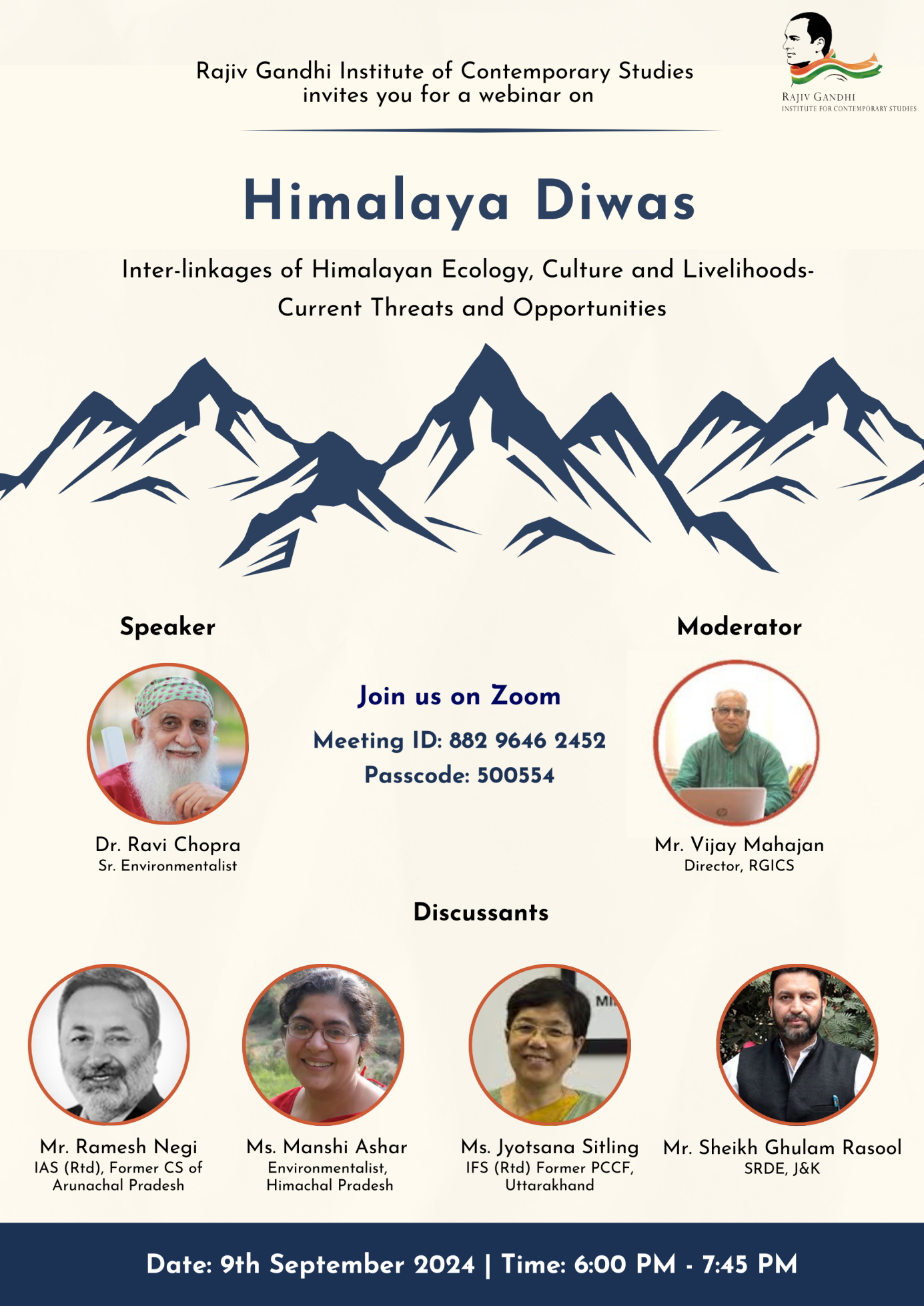
Ecological, Economic and Social Challenges and Opportunities in the Indian Himalayan Region
Dr. Ravi Chopra, eminent environment and social scientist focused on explaining prominent challenges in the Himalayas and the way forward. He started his brief lecture by saying that the anthropogenic interventions in this region have tremendously increased in the last 4-5 decades. Also the control of governments on natural resources has increased by decreasing controls of communities. He deliberated on following major challenges in the Himalayan Region.
- Glacial Lake Outburst Flood (GLOF) is the result of dismantling of large glaciers in the Himalaya. These lakes are gradually increasing in size and incidents of flooding are increasing year by year. The limited research on glaciers is focusing only on ways to treat glaciers. However, that is not possible because glaciers are largely inaccessible. The research and action must focus on valleys where the flood water destroys life and livelihoods.
- Decline in the Quality and Quantity of Forests: the area under the forests is gradually decreasing, which is a big concern. But even more problematic is the changing characteristics of forests. A large portion of forests in Uttarakhand and Himachal Pradesh are covered by chir pine forests, which provides resources for the resin industry. These forests do not support bountiful agriculture and livestock. To protect and promote local livelihoods, we must focus on protection and growth of mixed forests.
- Eastern Himalaya a serious biodiversity hotspot: This region has visible threats. In the last few years activities such as poaching, deforestation, expansion of agriculture and illegal trade of herbs have destroyed natural wealth in the region.
- Infrastructure: diversion of the forest land for infrastructural projects is the beginning of forest destruction. Often data used for such land transfer are not true, which leads to allocation of forest land more than the project requires. This forest loss is unaccounted for.
- Hydropower Projects: The problem of hydropower projects is a life cycle problem that starts with the initiation of the project till the end of the project. The Problems with hydropower projects are twofold: one, loss of land, especially sloppy land and second are drying of water streams/sources. The tunnelled hydropower projects have completely destroyed flowing rivers and aquatic biodiversity. Furthermore, it has affected livelihoods of local communities such as fishing and irrigation dependency on rivers.
After discussing major threats in the Himalayan region, Dr. Chopra briefly deliberated on the impact of climate change on livelihoods. He stated that some rivers in the Himalaya are snow fed but many rivers are rain fed. Rain fed rivers/streams in Himalaya provides more water to bigger rivers compared to snow fed rivers. For example at Devprayag in Uttarakhand nearly 175km downstream from origin of the Ganga River, the glacial water is just 28% of the total water, remaining 72% of Ganga water at Devprayag is fed by rain fed streams and rivers. The proportion of rain water increases as we go further downstream. With decreasing forest area and changing forest characteristics, the rainwater holding capacity of forest is decreasing. Finally these changes are leading to decrease in water flow in large and small rivers/streams in the Himalaya.
The increase in global temperature also has a direct impact on agriculture in the region. It has already affected apple cultivation in Himachal Pradesh, Uttarakhand and Sikkim. Due to less snowfall and short winter season many apple growing villages in these states have moved to vegetable cultivation in the last few years.
To address these challenges, Dr. Chopra advocated for a green economy in the Himalayan region. He argued that this economy should be shaped in such a way so that people not only earn their livelihoods but also fulfil their aspirations, so that human resources can be retained in these mountains. To achieve these goals he suggested following action points.
- Governance of natural resources should be decentralized as the forest department cannot protect and create a good forest. People should be given more responsibility in management of natural resources.
- Productivity of all types of land (agricultural, forest, pasture) needs to be improved.
- Protect, conserve and develop resources like soil, land, water and all types of bio resources.
- Hazardous infrastructural projects in the Himalayan region must be stopped and discouraged commissioning of any such new projects.
- Himalayan towns are very congested. They need to decongest and economic activities should be dispersed.
- Farmers in the Himalayan region do not have access to institutional farm credits as the agriculture is subsistence based and these institutions don’t see any profit. This should be altered and farmers should be offered institutional farm credits.
- Farmers should also be provided with knowledge input so that they can adapt to the changing climate and shrinking resource base.
Dr. Chopra after moderating the panel discussion also coordinated a brief session to incorporate questions, comments and reflection of other participants. In this session Ms. Suman Rao raised issues of optimum use of promising hemp production, bringing innovation in forest tourism and promotion of bio fuel as an alternative to large hydro power projects. Mr. Gautam Bandhopadhyaya raised the issue of hills in central India and called for a coordinated effort to conserve ecology of hills and mountains across India. Finally, Mr. Vijay Mahajan argued that the economy has to be re-shaped so that it can benefit nature and also generate enough jobs for people in the mountains. In his concluding remarks Dr. Chopra emphasised on the need of bringing a green economy which has full potential to meet needs of people and adequately address their aspirations.

